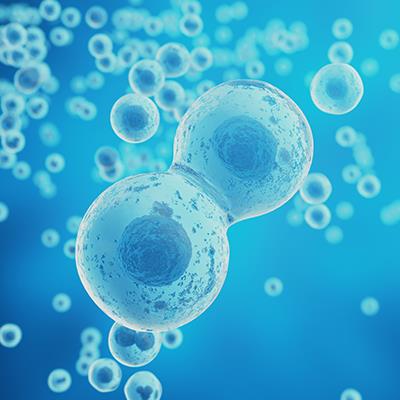September 21, 2022 -- Combining an antidepressant and vascular endothelial growth factor (VEGF) inhibitor improves outcomes in mouse models of a hard-to-treat type of brain cancer, despite neither treatment being efficacious as a single agent, according to new research.
In a study published in the current issue of Cancer Cell, Ludwig Cancer Research scientists reveal what they say are "remarkable synergies" in combining a repurposed tricyclic antidepressant (imipramine) with drugs that inhibit VEGF-VEGF receptor (VEGFR) signaling.
The brain cancer, glioblastoma multiforme (GBM), responds poorly to existing treatments. Newly diagnosed patients receive radiotherapy and chemotherapy as the standard of care. The median survival is 15 months and attempts to beat that figure have floundered, with the anti-VEGF antibody bevacizumab winning approval despite failing to improve survival and other drug candidates never delivering data to support authorization.
In 2015, researchers achieved a significant but limited survival benefit in glioma-bearing mice using the combination of a tricyclic antidepressant and an anticoagulant. The idea was to use an antidepressant, imipramine, to increase autophagy and an anticoagulant to inhibit the P2RY12 receptor and enhance the autophagy effect.
The new study builds on the 2015 paper by co-targeting distinctive tumor-promoting mechanisms along with autophagy. Reasoning that remodeling the robust tumor vasculature associated with glioblastoma may improve outcomes, the researchers tested the antidepressant imipramine in combination with an analog of bevacizumab that binds to and sequesters mouse VEGF.
As was found in clinical trials, bevacizumab failed to improve survival in mouse models when used as a monotherapy. However, combining the anti-VEGF antibody with imipramine significantly delayed tumor growth in mice. The researchers achieved similar results using axitinib, a small molecule tyrosine kinase inhibitor that inhibits VEGFR-1, VEGFR-2, and VEGFR-3.
Evidence that the efficacy of the combination depends on interferon gamma signaling, which stimulates the expression of programmed cell death ligand 1 (PD-L1) in tumors, led the team to assess the effect of adding a checkpoint inhibitor to the combination. The triple-combination improved survival.
Co-author Douglas Hanahan, PhD, Distinguished Scholar at the Lausanne Branch of the Ludwig Institute for Cancer Research, set out the clinical implications of the findings in a statement about the study's results.
"Because each of these therapies are already in clinical use they wouldn't have to go through the time-consuming pharmacological development and safety testing required of novel drugs. For this reason, we are hopeful that the combination therapy we've identified in this study can be tested relatively soon in human clinical trials for GBM, a fiercely aggressive cancer for which there is a desperate need for new treatment strategies," Hanahan said.
Hanahan is working with Dr. Andreas Hottinger of the Centre Hospitalier Universitaire Vaudois in Lausanne to set up a phase I pilot study to evaluate the combination. The trial has yet to receive regulatory approval.
Copyright © 2022 scienceboard.net









